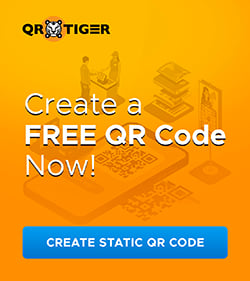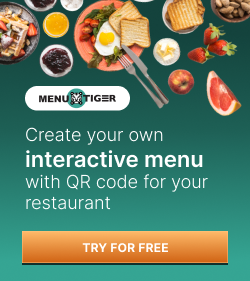7 Countries Rolling Out a GS1 QR Code

One small step for man, one giant leap for QR codes! A wave of GS1 QR codes is sweeping the globe, and a handful of countries are embracing them with open arms.
This means we’re taking product identification, supply chain tracking, and inventory management and improving them tenfold.
And as countries begin to roll out their special codes on a large scale, industries worldwide will see a major change in how goods and services are monitored, authenticated, and delivered.
In this article, we’ll discuss what this innovation means for businesses and consumers, delve into its uses in each region, and reveal the best QR code generator to put you on the right track to creating your own impressive QR codes.
Table of Contents
GS1 Sunrise 2027
For a long time, businesses have relied on the UPC/EAN barcode or the one-dimensional (1D) barcode and GS1 Data Matrix code to hold product identification.But times are changing, and so is the need for more traceability, information, and transparency.
In response to today’s growing demands, the world is moving toward a two-dimensional (2D) barcode or GS1 digital link QR code—a shift otherwise known as Sunrise 2027.
This marks a milestone date for the transition to 2D barcodes at point-of-sale (POS), which will allow for standardized information storage and distribution.
What is a GS1 QR code?

They are also the official supplier of GTINs (Global Trade Item Number), EANs (European Article Number), and UPCs (Universal Product Code).
GS1 plays the vital role of keeping product information clear and consistent, as well as maintaining overall transparency across the supply chain process.
Now, if you combine GS1 global standards and QR code technology, you’ll have your very own square-shaped translator of the physical and digital worlds.
How does a GS1 digital link QR code work? It follows a standard structure called a Uniform Resource Identifier (URI) syntax, with information including a domain, primary identification key, key qualifiers, and data attributes.
When a GS1 digital link is scanned, a resolver translates the encoded data and its unique product identifiers depending on specific scanning behavior traits (who, where, and how) to deliver relevant information to the right sector.
Who is launching a GS1-powered QR code?
Here we’ve compiled a list of countries and regions that have launched or are about to launch the highly anticipated GS1-standardized QR code:United States
The driving force behind Sunrise 2027 is none other than GS1 US, and they’re already in the process of modifying their POS terminals in preparation for replacing the nearly 50-year-old UPC barcodes with new and improved GS1 standardized QR codes.GS1 US president Bob Carpenter says the shift comes from a need for more highly advanced barcodes that will “enhance supply chain visibility, efficiency and patient and consumer safety.”
Leading US brands such as PepsiCo Inc., P&G, and Walmart have been key influences in the global transition to 2D barcodes.
PepsiCo, in particular, is charging ahead to make Sunrise 2027 a reality. By adopting 2D barcodes, they will offer consumers a myriad of information about the fizzy drink’s ingredients with a quick scan.
United Kingdom

Ntsama, founded by 59-year-old Joyce Gannon, is a delicious brand of chili oils and sauces originating from the rich culinary flavors of Africa. Each product is made with locally sourced and 100% vegan-friendly ingredients.
With a moving brand story that customers could connect to, Joyce began sharing her products on Amazon and Etsy to reach more people.
However, she soon realized that her products still lacked the personal touch that had drawn people to them in the first place.
The answer to Joyce’s dilemma was found in the collaboration of GS1 UK and Orca Scan to give her a cost-effective solution that could help her engage with her customers and bring them closer.
Australia
While 2D barcodes are not yet widely used in Australia, GS1 Australia is slowly warming up businesses to the global transition of all retail systems to 2D barcodes (QR codes!) by the year 2027.They created an informative video series to inform brand owners, retailers, and packaging companies about the exciting potential and applications of QR codes powered by GS1.
The first video in the series acts as “an introduction to the adoption and implementation of 2D Barcodes in Australian retail.”
Others in the series feature popular brands like Woolworths and 7-Eleven that share their experience and success with 2D barcodes, encouraging other smart businesses to do the same.
Ireland

Kinsale Mead, a renowned meadery in Kinsale, Co. Cork, pays homage to the traditional art of making mead in Ireland and has an impressive run of award-winning mead, the latest one being from the Guaranteed Irish Awards.
It also happens to be the first GS1 Ireland member to steer businesses toward a new age of codes. Kate Hempsey, co-owner of Kinsale Mead, is now proudly rolling out GS1 QR codes across their range of products.
The first product is Wild Forest Honey Mead, and the good news is it’s already available on shelves!
Philippines
In response to changing customer expectations and increasing demand for product transparency, GS1 Philippines has also launched 2D barcodes or QR codes.
Since the versatile QR code will replace the barcode we’ve all come to know, brand owners can connect with consumers like never before, offering them more product information than was imaginable with standard barcodes.
Upon scanning a GS1-standardized QR code, shoppers and consumers can access lists of ingredients, allergens, promotions, sustainable sourcing, recycling instructions, and more.
“GS1 Philippines members pave the way in this groundbreaking transition to more efficient and robust supply chain operations,” announced GS1 Philippines President Roberto “Bobby” Claudio.
Currently serving over 5,000 retailers, GS1 Philippines hopes to reach at least 30,000 nationwide businesses by the end of 2024.
Hong Kong

And who do they have to show for it? Sixty-five-year-old local soy maker Top Soya! The brand has products that include soy milk and tofu pudding, which are widely popular and available across HK.
Everyone knows that with great popularity comes great responsibility or something along those lines. Well, Top Soya takes this saying seriously and came out with new packaging designed with “1QR”—their name for the GS1 QR code.
As the adoption of GS1’s 2D barcodes has already helped Top Soya with its targeted marketing efforts and made product information more accessible, the brand is planning on applying 1QR on a grander scale (their entire range of products).
Japan
Last but not least is Japan, which is known for its deep-rooted culture in robotics and for being no stranger to using different types of QR codes in everyday life.GS1 Japan’s Handbook of 2023-2024 illustrates a promising initiative to promote “Digital Transformation” with GS1 2D symbols.
GS1 Japan's first pilot of the GS1 2D barcode, which has been in development since 2017 to create guidelines for proper digital labeling of raw materials, was realized in February 2023.
Japan has held seminars, presented case studies, and conducted demonstrations at exhibitions to help companies understand GS1 standards and differences among syntaxes.
How do QR codes work and what are they for? GS1 Japan’s website has a Basic Guide, available only in Japanese, explaining everything you need to know about GS1 rules, QR codes, identification keys, application identifiers, and GS1 barcodes.
Highlights of a GS1 digital link QR code
Better customer experience
A GS1 Digital Link has a capacity that is large enough to hold impressive amounts of data and lets you update its content even after a product is manufactured and placed safely in consumers’ physical and digital shopping carts.This ensures customers receive the most current and relevant content, such as detailed ingredient or allergen information and ideas or recommendations for product use.
Unique product identifiers
Each product is assigned a single unique identifier to facilitate tracking from manufacturer to distributor to consumer, all while allowing brands to guarantee product authenticity.All-around sustainability
Another standout feature of these incredibly sophisticated dynamic QR codes is that they’re cost-effective and provide consumers with full transparency about where their products have been, what they’re made of, and their ecological impact.How to jump into creating QR codes with the best QR code generator
Want to get started making impressive branded QR codes in no time? Look no further than QR TIGER to make it all happen in only five easy steps:- Go to QR TIGER and log into your account.
- Select a QR code solution (e.g., URL, vCard, Link in Bio) and enter the necessary information.
- Choose either Static QR or Dynamic QR, then click Generate QR.
- Customize your newly generated QR code with your brand’s color palette, play with patterns and eyes, and upload your brand logo to showcase it in the center.
- Remember to test-scan your QR code to ensure it works properly, then click Download to save it.
Pro-tip: With dynamic QR codes, you can create QR codes in bulk or edit your QR code’s embedded content even after printing.
GS1 QR codes take center stage on the global market
Digital marketing is known for its fleeting trends, but one that has remained constant is this: customers continuously expect more from their trusted brands.This means more information about the products they buy, more corporate environmental responsibility, and above all, more genuine connections.
In light of this, Sunrise 2027 paints the business world in hues of I’ve-got-you, with the perfect pairing of GS1 standards and QR codes to bring about bright opportunities for brands to engage with their target audiences.
And since we all have to start somewhere, why not begin your branded QR code journey with QR TIGER, the most advanced and arguably the best QR code generator online, to start making marketing magic?
FAQs
What is the purpose of a GS1 barcode?
GS1 barcodes serve as standardized, globally understood product identification, so nothing is lost in translation along the supply chain process.When a GS1 barcode is scanned, it reveals a wealth of information stored in the GS1 database (sometimes called the GS1 Global Data Synchronization Network).
How do I create a GS1 QR code?
Start by applying through GS1 for a Global Trade Item Number (GTIN) to be assigned to your product. Then, build your GS1 Digital Link that includes all of your desired product information.Choose a reliable and advanced QR code generator that offers GS1 2D barcode compatibility, add your GS1 Digital Link, and let the generator create your QR code for you.
What is the difference between the GS1 data matrix and the GS1-powered QR code?
A data matrix is smaller, holds less information, and is ideally used for limited spaces, such as tiny electrical components.However, a GS1-standardized QR code offers greater data capacity, though it also needs to be applied to a bigger area for proper scanning.








